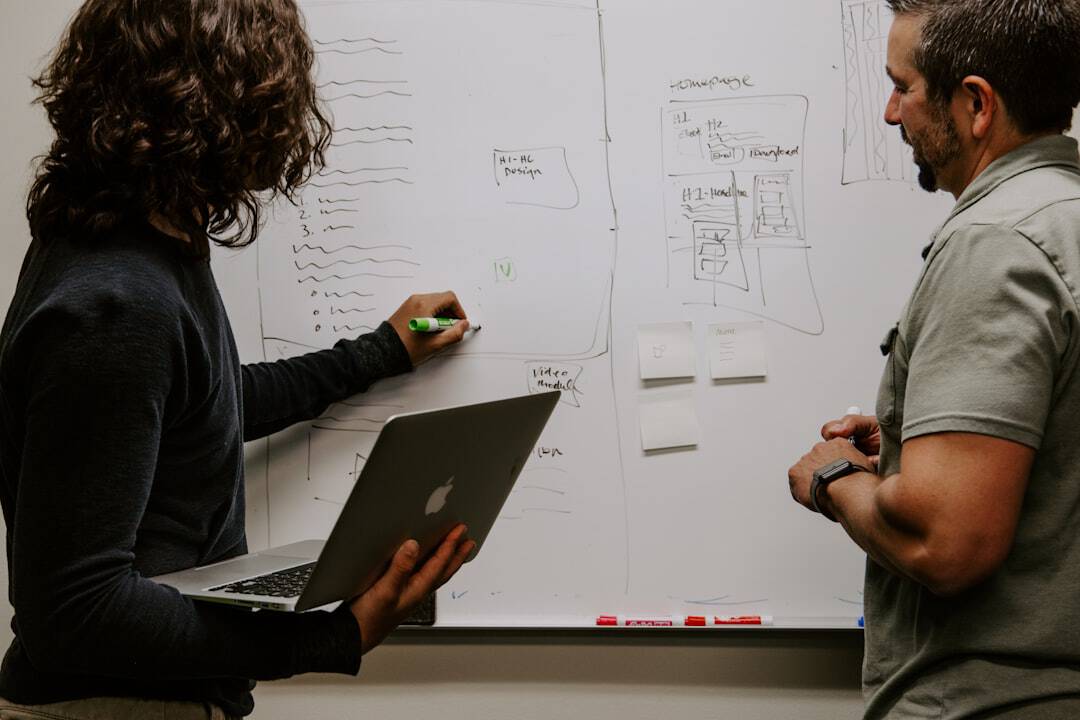Computer vision is a branch of artificial intelligence focused on enabling computers to interpret and understand visual information. This field involves developing algorithms and techniques that allow machines to extract meaningful data from images and videos. Stanford University offers a highly influential course in computer vision called CS231n, also known as “Convolutional Neural Networks for Visual Recognition.”
CS231n is a deep learning course that teaches students the fundamentals of computer vision and how to apply deep learning techniques to visual recognition tasks.
The course covers a broad range of topics, including image classification, object detection, neural networks, and convolutional neural networks (CNNs). Taught by leading experts in the field, CS231n provides students with a comprehensive understanding of the latest advancements in computer vision. Through a combination of lectures, assignments, and projects, students learn how to build and train neural networks for various visual recognition tasks.
The course emphasizes the importance of understanding the underlying principles of deep learning and their practical application in real-world scenarios. CS231n plays a significant role in shaping the future of computer vision and AI by equipping students with the knowledge and skills necessary to make substantial contributions to the field.
Key Takeaways
- Computer Vision is the field of study that focuses on enabling computers to gain high-level understanding from digital images or videos.
- CS231n is a popular course at Stanford University that covers the fundamentals of Computer Vision and Convolutional Neural Networks (CNNs).
- CNNs are a type of deep learning algorithm that have revolutionized the field of Computer Vision by enabling machines to learn directly from images and videos.
- Image classification and object detection are two key tasks in Computer Vision that can be effectively tackled using CNNs, as taught in CS231n.
- CS231n also explores AI applications in Computer Vision, such as medical image analysis, autonomous vehicles, and facial recognition.
Understanding Convolutional Neural Networks (CNNs) in Computer Vision
Understanding CNN Architecture
In CS231n, students gain a deep understanding of CNNs and how they are used for various visual recognition tasks. CNNs consist of multiple layers, including convolutional layers, pooling layers, and fully connected layers. The convolutional layers apply filters to the input images, extracting features such as edges, textures, and shapes.
How CNNs Work
The pooling layers then downsample the feature maps, reducing the spatial dimensions of the data. Finally, the fully connected layers combine the extracted features to make predictions about the input images. Through hands-on assignments and projects, students in CS231n learn how to design and train CNNs for tasks such as image classification and object detection.
Advancements in Computer Vision
Overall, CNNs have significantly advanced the capabilities of computer vision systems, enabling them to achieve state-of-the-art performance in various visual recognition tasks. By understanding CNNs in depth, students in CS231n are equipped with the knowledge and skills needed to develop cutting-edge solutions for real-world applications in computer vision.
Image Classification and Object Detection using CS231n

Image classification and object detection are two fundamental tasks in computer vision that have been greatly enhanced by deep learning techniques taught in CS231n. Image classification involves assigning a label or category to an input image, while object detection goes a step further by not only classifying objects but also locating them within the image. These tasks are essential for a wide range of applications, including autonomous vehicles, medical imaging, surveillance systems, and more.
In CS231n, students learn how to build and train neural networks for image classification using techniques such as CNNs. They gain hands-on experience with popular deep learning frameworks like TensorFlow and PyTorch, enabling them to implement state-of-the-art models for image classification tasks. Additionally, the course covers advanced topics such as object detection using techniques like region-based convolutional neural networks (R-CNN) and You Only Look Once (YOLO) algorithms.
By mastering image classification and object detection in CS231n, students are well-prepared to tackle real-world challenges in computer vision. They are equipped with the knowledge and skills needed to develop innovative solutions for applications that require accurate and efficient visual recognition capabilities.
Exploring AI Applications in Computer Vision with CS231n
| Topic | Metrics |
|---|---|
| Image Classification | Accuracy, Precision, Recall |
| Object Detection | Mean Average Precision (mAP), Intersection over Union (IoU) |
| Semantic Segmentation | Pixel Accuracy, Mean Intersection over Union (mIoU) |
| Image Generation | Frechet Inception Distance (FID), Inception Score (IS) |
The applications of artificial intelligence in computer vision are vast and diverse, ranging from healthcare and agriculture to robotics and entertainment. In CS231n, students explore a wide range of AI applications in computer vision and learn how deep learning techniques can be leveraged to solve complex visual recognition tasks. One prominent application of AI in computer vision is medical imaging, where deep learning models are used to analyze medical scans and diagnose diseases.
Another application is in autonomous vehicles, where computer vision systems enable vehicles to perceive their surroundings and make decisions in real-time. Additionally, AI-powered computer vision technologies are being used in agriculture for crop monitoring and yield prediction, as well as in robotics for object manipulation and navigation. By delving into these AI applications in CS231n, students gain a comprehensive understanding of how deep learning is transforming various industries through its powerful visual recognition capabilities.
They also have the opportunity to work on projects that address real-world challenges in these domains, further enhancing their practical skills and expertise in applying AI to computer vision.
Deep Learning for Image Recognition and Understanding
Deep learning has revolutionized image recognition and understanding by enabling computers to automatically learn hierarchical representations of visual data. In CS231n, students delve into the principles of deep learning and how it can be applied to extract meaningful information from images. Deep learning models, such as CNNs, have demonstrated remarkable performance in image recognition tasks, surpassing human-level accuracy in many cases.
These models can effectively learn complex patterns and features from large-scale datasets, allowing them to recognize objects, scenes, and even subtle details within images. Through lectures and hands-on exercises, students in CS231n gain a deep understanding of how deep learning models are designed, trained, and evaluated for image recognition tasks. Furthermore, deep learning enables computers to understand the content of images at a semantic level, going beyond simple pixel-level analysis.
This has paved the way for applications such as image captioning, where machines generate natural language descriptions of visual content, as well as visual question answering (VQA), where machines answer questions about images based on their understanding of the visual content. By mastering deep learning for image recognition and understanding in CS231n, students are well-equipped to contribute to advancements in this rapidly evolving field and develop innovative solutions for a wide range of applications.
Implementing Neural Networks for Image Segmentation and Feature Extraction

Image segmentation and feature extraction are critical tasks in computer vision that involve partitioning an image into meaningful regions and extracting relevant information from those regions. In CS231n, students learn how to implement neural networks for image segmentation and feature extraction, enabling them to analyze visual data at a more granular level. Image segmentation techniques allow computers to identify and delineate objects or regions within an image, which is essential for tasks such as medical image analysis, scene understanding, and video processing.
Students in CS231n explore advanced segmentation methods using deep learning models like fully convolutional networks (FCNs) and U-Net architectures. They gain practical experience in training these models to accurately segment objects within images and understand their applications in various domains. Feature extraction is another crucial aspect of computer vision that involves capturing relevant information from images to facilitate further analysis or processing.
In CS231n, students delve into feature extraction techniques using neural networks, including methods such as transfer learning and feature visualization. They learn how to leverage pre-trained models to extract high-level features from images or fine-tune these models for specific tasks. By mastering neural networks for image segmentation and feature extraction in CS231n, students are well-prepared to address complex challenges in computer vision that require detailed analysis and understanding of visual data.
Future of Computer Vision and AI with CS231n
The future of computer vision and AI holds tremendous potential for transformative advancements across various industries. With the knowledge and skills gained from CS231n, students are poised to play a pivotal role in shaping this future by developing innovative solutions that push the boundaries of visual recognition capabilities. One exciting direction for the future of computer vision is the integration of multimodal learning, where machines can effectively process and understand information from multiple sensory modalities such as vision, language, and audio.
This opens up new possibilities for applications such as video understanding, human-computer interaction, and assistive technologies. Furthermore, advancements in generative models such as generative adversarial networks (GANs) and variational autoencoders (VAEs) are poised to revolutionize content generation and manipulation in computer vision. These models enable machines to generate realistic images, enhance visual content, and even synthesize new visual concepts based on learned representations.
Additionally, the continued evolution of AI ethics and responsible AI practices will be crucial in ensuring that computer vision technologies are developed and deployed ethically and equitably. As AI becomes increasingly integrated into society, it is essential for practitioners in computer vision to consider the societal impact of their work and prioritize ethical considerations. In conclusion, CS231n plays a pivotal role in preparing students to drive the future of computer vision and AI by equipping them with the knowledge, skills, and ethical awareness needed to make meaningful contributions to this rapidly evolving field.
As technology continues to advance at an unprecedented pace, the potential for transformative innovations in computer vision is limitless, and students who have undergone rigorous training in courses like CS231n are well-positioned to lead the way towards a future where machines can perceive and understand the visual world with unprecedented accuracy and sophistication.
If you’re interested in learning more about virtual economies and digital assets, you should check out this article on metaverse platforms and ecosystems. It provides an overview of major metaverse platforms and discusses the role of virtual economies and digital assets within these virtual worlds. For further reading on this topic, you can also explore the resources and publications listed on the website.
FAQs
What is CS231n?
CS231n is a course on Convolutional Neural Networks for Visual Recognition offered by Stanford University.
What does CS231n cover?
CS231n covers topics such as image classification, object detection, neural network architectures, and deep learning for visual recognition.
Who is CS231n designed for?
CS231n is designed for students and professionals interested in computer vision, machine learning, and deep learning.
Is CS231n available online?
Yes, CS231n is available online for free through Stanford University’s website and other online learning platforms.
What are the prerequisites for CS231n?
Prerequisites for CS231n include a strong background in linear algebra, calculus, probability, and programming (preferably in Python).
Are there any assignments or projects in CS231n?
Yes, CS231n includes assignments and projects that involve implementing and training neural networks for various computer vision tasks.
Who teaches CS231n?
CS231n is taught by a team of instructors from Stanford University, including Fei-Fei Li, Andrej Karpathy, and Justin Johnson.











Leave a Reply